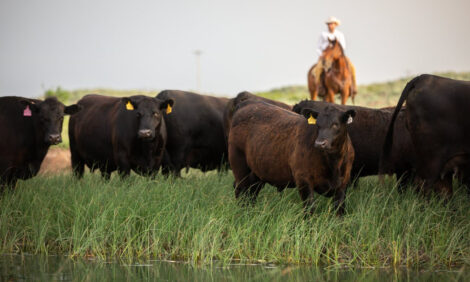



Choosing the best reproductive strategy for a cattle herd
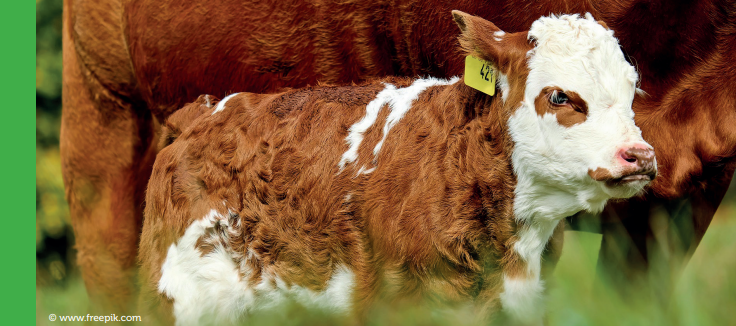
Why is reproduction management so important?
Reproduction is an important part of cattle production systems.
The parturition of a cow results in:
1 - Production of offspring: Adding a new calf to the herd makes extra income. It might be sold or integrated into the productive herd, either in expansion or in replacement of other cows.
2 - Initiation of lactation: Dairy herd depends greatly on an adequate frequency of parturition in order to have cows in lactation, a six-month period after calving which results in high milk production.
Genetic improvement: Genetic improvement in herd is achieved by the introduction of offspring sourced from genetically superior sires, dams or both.
Animal performance: Productive and reproductive performances depend on the interaction of the animals with their environment. The genetic potential of a bovine can be expressed only when the animal is raised in n adequate environment. In general, the higher the genetic merit for milk and meat production, the higher the demand regarding environmental conditions. Pivotal conditions include food availability and quality, sanitation, husbandry methods and environmental temperature.
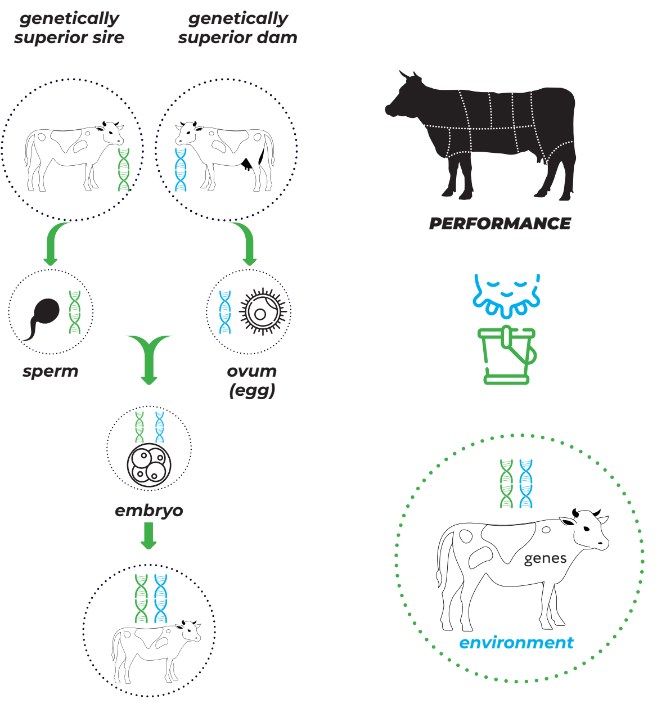
Which reproductive strategy is best?
The reproductive strategy for a cattle herd must be chosen properly. To do so, the relevant aspects should be taken into account: management and husbandry capacities, environmental conditions, desired pace of genetic improvement, reproductive efficiency, and cost/benefit relationship. Advancing the reproductive strategy of herd from a simpler to a more complex one requires adequate technical assistance and husbandry approaches that are compatible with the genetic quality of the produced offspring.
Natural Mating
Pros:
- Requires low management capacity
- No need for visual detection or hormonal synchronization of estrus
- Higher pregnancy rates can be achieved
Cons:
- Requires bull management and feeding
- Bulls need to be tested for breeding soundness
- Genetic improvement is null or slow
Artificial Insemination
Cons:
- Requires estrus detection or synchronization
- Requires specialized insemination technicians
- Requires semen storage in liquid nitrogen
Pros:
- Allows directed genetic improvement using superior sires
- No need for raising bulls
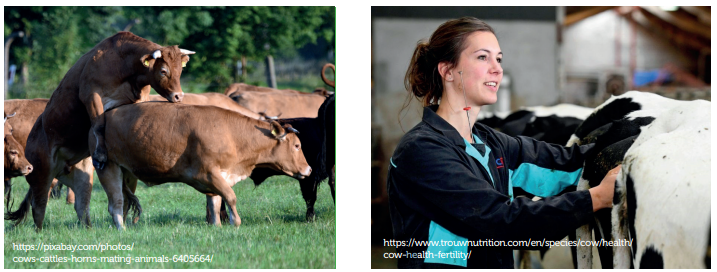
Embryo Transfer
Cons:
- Requires embryo production/acquisition
- Requires estrus detection or synchronization
- Requires highly specialized embryo transfer technicians
- Pregnancy rates are lower, affecting reproductive efficiency
Pros:
- Considerably accelerates genetic improvement using superior sires and dams
- No need for raising bulls
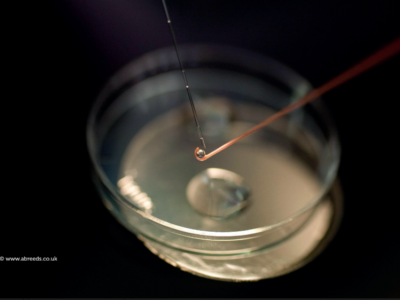
How to achieve sustainable cattle production:
The productivity and sustainability of a cattle herd are influenced by three inter-dependent and essential strategic matters: genetics, environment and management. Alignment of these strategic topics with productivity goals is the key to attaining success in dairy and meat production systems.
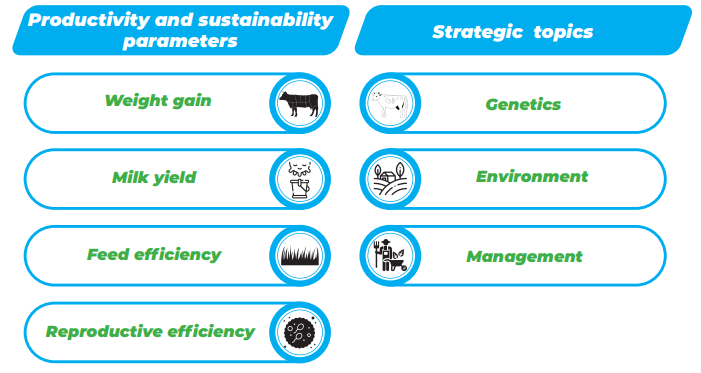
Actions for assuring compatibility among productivity goals and requirements
• Improvement of feed availability and nutritional quality
• Improvement of disease control programmes
• Mitigation of stressing environmental conditions
• Establishment of a genetic improvement programme
• Improvement of managerial capacities
• Enhancement of specialized workforce availability
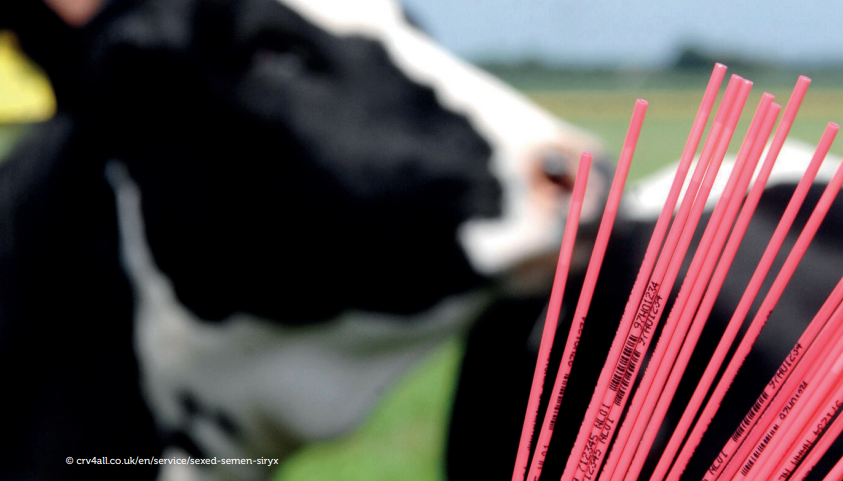
Genetic improvement programmes
Genetic improvement relies on detection and reproduction of genetically superior animals. Determination of genetic superiority in sires and dams is done more precisely by robust initiatives that test the performance of an individual and its progeny. Genomic sequencing also is a method to help in this matter. The easiest way to propagate superior genes is to introduce artificial insemination as a reproductive strategy in herds, using semen from genetically superior sires. If acceleration of genetic improvement is needed, superior dams also might be used, through the technique of embryo transfer.
Understanding embryo transfer in cattle herds
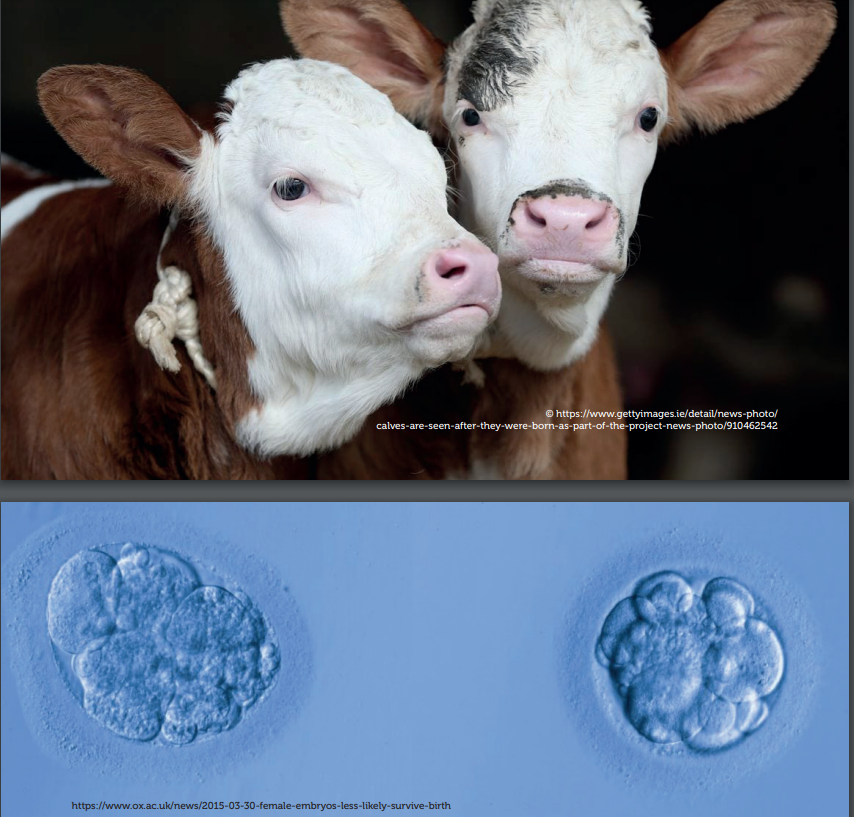
What is embryo transfer?
In cattle herds, embryo transfer is a procedure of transferring an embryo from a donor cow to the reproductive tract of a recipient cow, in order to generate a pregnancy. The transferred embryo is a morula or blastocyst, on day five to seven after fertilization.
Embryo source
In vivo embryo production involves fertilizing ovulated eggs into the reproductive tract of the donor cow. Later, around day seven after fertilization, embryos are collected (or flushed) from the uterus. In general, multiple ovulations are induced by the administration of hormones to the donor. Therefore, this technique is commonly known as “multiple ovulation and embryo transfer,” or MOET. The number of embryos produced by multiple ovulation is highly variable. In vitro embryo production, or IVP, involves collecting eggs from the ovarian follicles of a donor cow. This process is named ovum pick-up (OPU). Those eggs are taken into the laboratory, fertilized in a Petri dish or plate. This process is named in vitro fertilization, or IVF. Produced embryos are then cultivated inside an incubator under adequate temperature, humidity and media. Embryo culture occurs until day seven after fertilization.
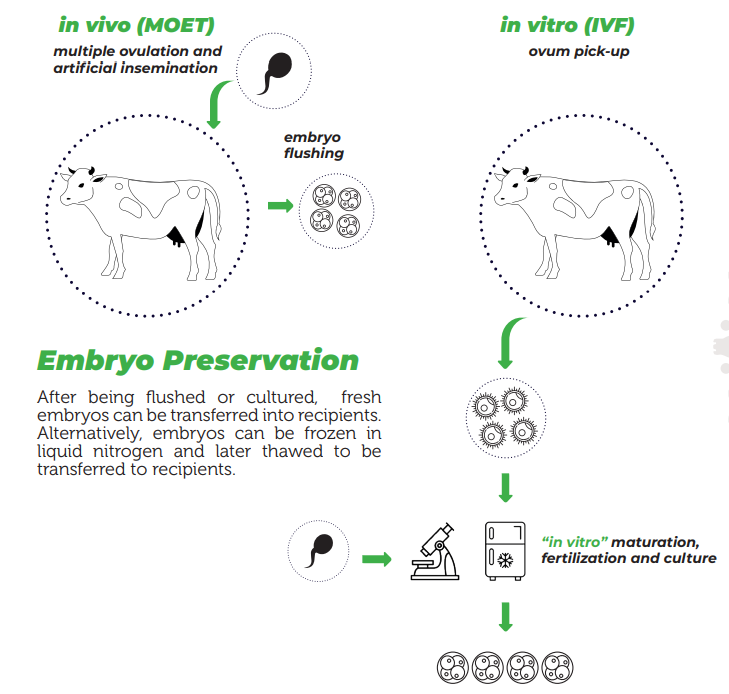
How to transferan embryo
Transfer of embryos is conducted at the stage of morula or blastocyst (six to seven days after fertilization). If they are frozen, they must be thawed immediately before transfer.
Recipient selection
Ideally, recipients must be highly fertile cows or heifers in excellent health and nutritional condition. Their size and calving capacity must be compatible with the expected size of the offspring.
Recipient synchronization
All recipients must have their estrus cycle synchronized to the developmental stage of the embryo. They must be on day five to seven after their last ovulation. Ovulation is predicted by heat (estrus) observation or can be induced by using hormones.
Embryo transfer
The synchronized recipient must be examined by a veterinarian before embryo transfer. This is to determine from which ovary (right or left) the previous ovulation occurred. Once this is determined, the embryo must be deposited into the uterine horn of the side of the ovulation. This deposition can be performed by transposition of the cervix, using an embryo transfer pipette, or surgically. For both techniques, the recipient might receive epidural anaesthesia.
Pregnancy rates
Pregnancy rates with good-quality, fresh embryos from superovulated cows range from 30 to 50 percent with nonsurgical transfer. Frozen embryos lose quality and therefore pregnancy rates are even lower.
Decision-making
The decision to use embryo transfer must rely on the balance of the expected genetic advancement in contrast with the monetary costs, the necessity of specialized technical assistance, and lower pregnancy rates.
Checklist for a successful embryo transfer programme
Embryo transfer is a powerful tool to boost genetic improvement, once it allows a most intense use of genetically superior and dams. The introduction of an embryo transfer programme into a herd occurs more effectively if an artificial insemination programme is already well established. The following lists can help determine whether a herd is ready for embryo transfer.
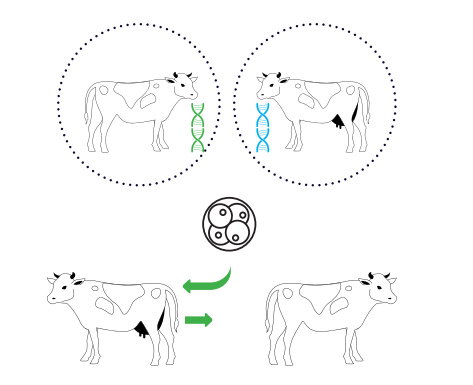
Environment
If genetically superior animals are introduced into a herd, the raising conditions must fit the requirements of those animals. The most relevant needs are:
• Excellent health monitoring and sanitary
management
• Conditions offering high-quality nutrition
• Adequate environmental temperature and
humidity
Recipients
Selection of embryo recipients is a crucial for the success of embryo transfer programme. The main requirements are:
• Highly fertile heifers or cows
• Established estrus monitoring or synchronization programme
• Available veterinary assistance for embryo transfer and pregnancy check
Embryos
The source of embryos must be carefully chosen. The genetic merit of the sire and dam should be evaluated. Upon the following scenarios, the topics to be taken into account are:
Purchasing embryos
• Assure good embryo quality and embryo source reliability
• If using fresh embryos, recipient must be ready for transfer on the day the embryos arrive
• If using frozen embryos, a reliable storage scheme in liquid nitrogen is necessary
Producing embryos
• The most feasible strategy for small farms is to produce embryos in vivo
• Ideally, the donor (dam) and sire must be of high genetic merit
• Specific hormones are needed for multiple ovulation induction
• Specialized veterinary technical assistance is required

